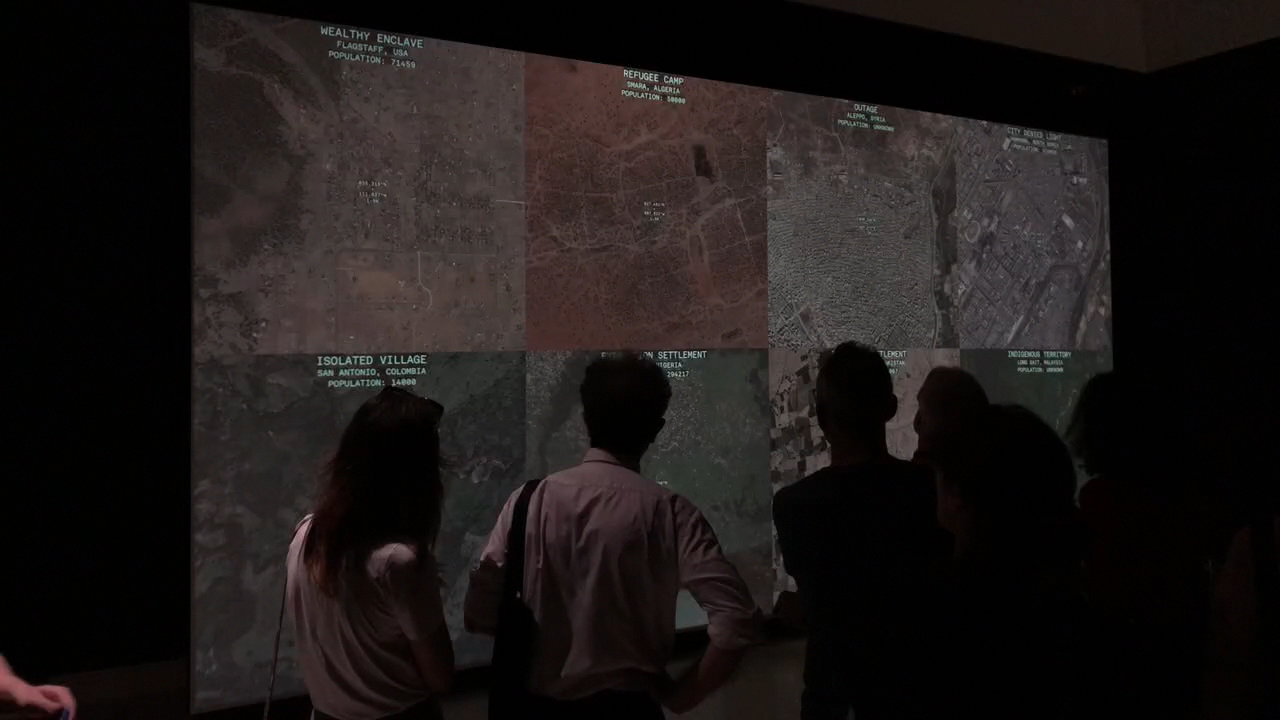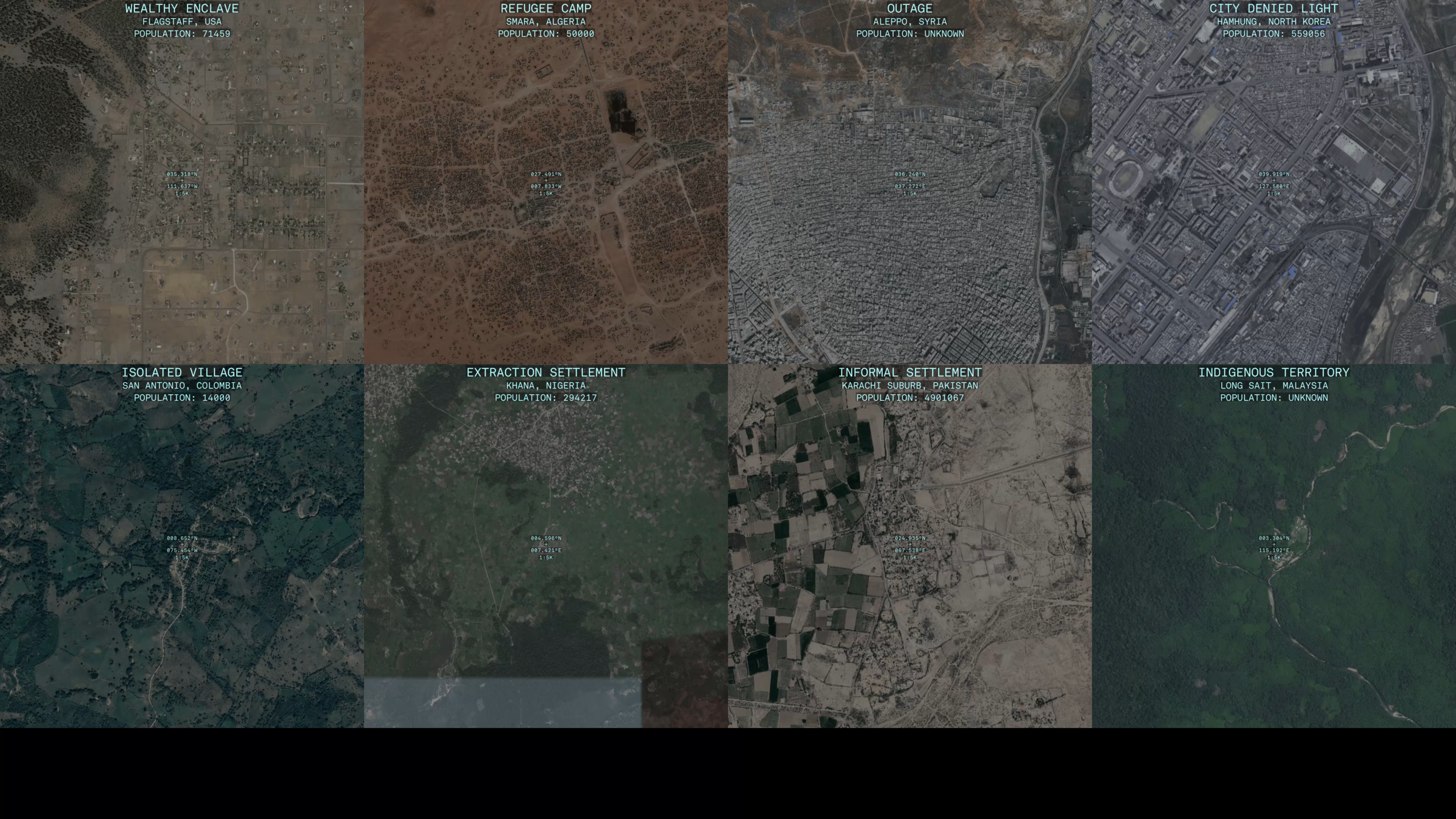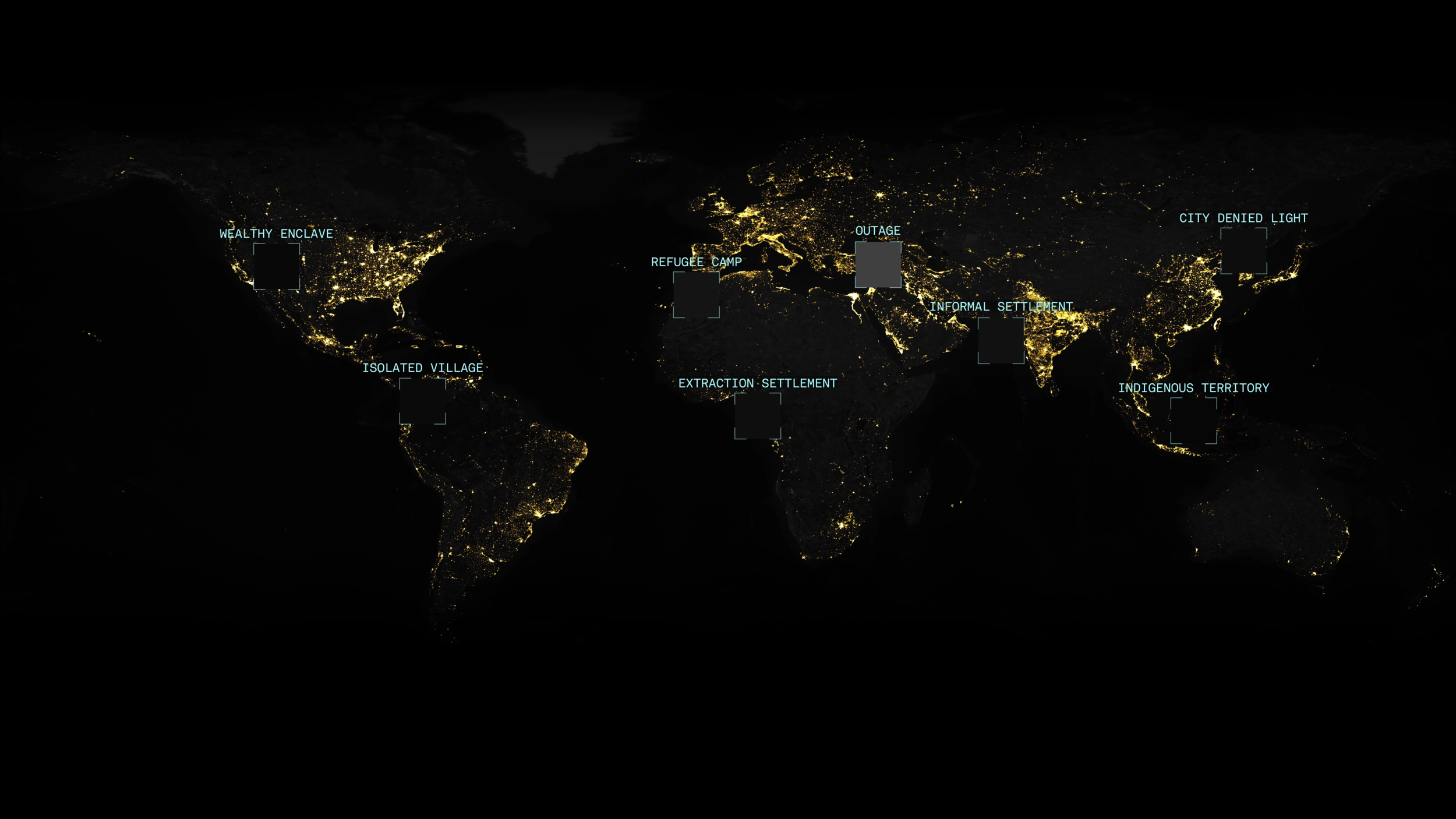PROJECTS / IN PLAIN SIGHT










In Plain Sight was commissioned for the US pavilion at the Venice architectural Biennale. It was part of a larger thematic show entitled, “Dimensions of Citizenship,” where seven design firms were given the topic of citizenship relative to an assigned spatial scales. Our team—which was a collaboration amongst myself, Elizabeth Diller, and Laura Kurgan—was assigned the scale “Global.” We explored Global citizenship through a 20 minute animated data narrative that engaged critically with the relationship between geospatial data and the numerous forms citizenship that operate simultaneously today.
In Plain Site argues that a conventional reading or use of common global data sets often obscures numerous forms of being in the world while making other forms of citizenship highly legible. This piece attempts to highlight this in an affirmative fashion: by reading these datasets differently they can be used to highlight more obscure forms of citizenship and open them up to narrative speculation.
We focused on two common spatial datasets: the ‘Night Lights’ map produced by NASA and the CEISEN Gridded Population of the World dataset. Researchers in a variety of disciplines use the ’Night Lights’ data set to show the emission of electrical light and treat it as a surrogate for the patterns of human settlement. By extension, it is often associated with narratives of development and a borderless world. Gridded Population of the World is created by numerous demographers who have given themselves the nearly absurd task of counting every person on the world and unifying these numbers into a single dataset.
By looking at the overlaps and gaps between these two data sets we highlighted discrepancies that demonstrated how neither of these commonly used maps could ever give an accurate depiction of human settlement and citizenship. This comparison yielded 16,000 sites of anomalies between the two data sets. On the one hand, we found numerous sites that contained night lights but no people, and on the other hand found numerous sites of settlements residing in the dark. This analysis provided the content for creating four narrative zooms that looked at crucial relationships between humans and electricity.
LIGHTS, NO PEOPLE / PEOPLE, NO LIGHTS
In plain sight began by looking at the discrepancies between the Gridded Population of the World dataset and NASA’s nighttime lights dataset. By comparing the gaps between them, one can find numerous locations that contain people but have no nighttime illumination. And also many locations that are brightly lit but do not officially contain people. These include wealthy enclaves, refugee camps, places that have been devastated by environmental and political conflicts, slums, and isolated villages. Through these categories we sampled the darkness on the nighttime lights map in over 120 locations worldwide. In contrast to their darkness, we then depicted them in satellite imagery that shows the various patterns and densities of their population. Alternatively, we explored locations that were brightly illuminated but contained no populations. These sites include power plants, tourism resorts, extraction sites, national borders, and several other conditions. Like the previous condition we depicted over 120 examples worldwide through both the nighttime lights imagery and more conventional satellite images. This second taxonomy—lights but no people—provided a series of case studies on which we created more detailed stories at a regional scale.
This scene explores the relationship between mining operations power and local communities in the Democratic Republic of the Congo. Glencore, a Swiss Anglo, mining corporation owns and operates the KOV mine in the South-East portion of the conntry. This mine has extensive electricity requirements which are supported by the Inge Dam hydro-electric power plant located 17000 KM to the west. A single, high-voltage DC power line traverses the width of the country and connects the dam to the mine. Though it runs adjacent to numerous towns and cities, the populations in these settlements are unable to draw power from the line and suffer unreliable access to electricity. By inspecting the Night Lights imagery, one finds that both the Inga Dam and the KOV mine enjoy strong and consistent illumination, while the settlements along the line remain in the dark. The scene concludes by mapping a selection of 128 mining operations owned by Glencore worldwide, many of which replicate the same disservices as depicted in this scene.
The Punta Cana region of the Dominican Republic is popular resort that draws many tourists from around the world. However, Punta Cana, and many other similar resort towns, have nearly zero permanent citizens. In support of their touristic activities, resort towns have built powerful and reliable electricity sources that are intended purely for use by tourists. The power they generate does not benefit any of the adjacent settlements despite drawing on these settlements for their workforce. These adjacent settlements rely on the Dominican Republic’s public but unreliable power supply. Comparing these towns with their adjacent tourism resorts, one finds bright coastal towns in sharp contrast to numerous other cities that remain in the dark.
The Las Malvinas natural gas extraction plant in Peru provides much of the power for Peru’s urban settlements along its western coast. Over the last 20 years the growth of Lima, Peru’s major metropolitan area, has coincided with the growth of natural gas infrastructure and an acceleration of natural gas extraction. This infrastructure has been understood as a modernizing force for Peru’s citizens, yet, its benefits are limited only to Peru’s metropolitan population. This scene looks at the settlements of another Peruvian population— its numerous indigenous tribes. Despite living on protected lands, natural gas infrastructure runs through this community’s territory and numerous extraction exceptions have been granted in these protected ecological regions. As a result of extraction, and the inevitable pollution it causes, numerous members of the indigenous community have gotten sick and perished or have been forced to move to other parts of the country.
The final scene of In Plain Sight looks at the politics of electricity and citizenship within the context of the United States. In the autumn of 2017, two hurricanes of similar magnitude struck the United States within 30 days of each other. The first, Hurricane Harvey, struck the Houston area of Texas causing large amount of flooding and widespread power outages. Despite this initial shock to the energy grid, power was quickly restored to 100% of the citizens and business. The second storm, hurricane Maria, struck Puerto Rico only a few weeks later again causing widespread damage and a 100% loss of power. Though Houston’s power was restored quickly, Puerto Rico did not enjoy the same response. Over six months later, the island’s power had not yet returned to full service. Areas that had power reestablished still suffer from frequent outages. Though both Houston and Puerto Rico are each home to millions of US citizens, the rights of access to electricity enjoyed by both populations is not equal.
[PROJECTS]
EXHIBITIONS
23.02.2022- 25.04.2022
Réseaux-Mondes (World of Networks)
Le Centre George Pompidou Paris, France
6.02.2021 - 16.05.2021
Design for Different Futures
Art Institute of Chicago
Chicago, USA
12.09.2020 - 04.11.2021
Design for Different Futures
Walker Art Center
Minneapolis, USA
22.10.2019 - 08.03.2020
Design For Different Futures
Philadelphia Museum of Art
Philadelphia, USA
01.02.2019 - 30.04.2019
Dimensions of Citizenship
Wrightwood 659 Gallery
Chicago, USA
26.05.2018 - 25.11.2018
Dimensions of Citizenship
Venice Architecture Biennale
Venice, Italy
DESIGN TEAM
Diller Scofidio + Renfro
Robert Gerard Pietrusko
Laura Kurgan w/
Columbia Center for Spatial Research
VISUALIZATION TEAM
Robert Gerard Pietrusko
Grga Basic
Adam Kai Ng
Scott Smith
SOUND DESIGN
Robert Gerard Pietrusko























